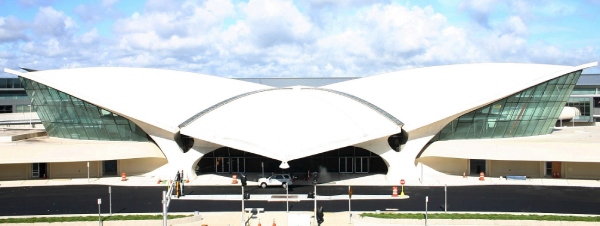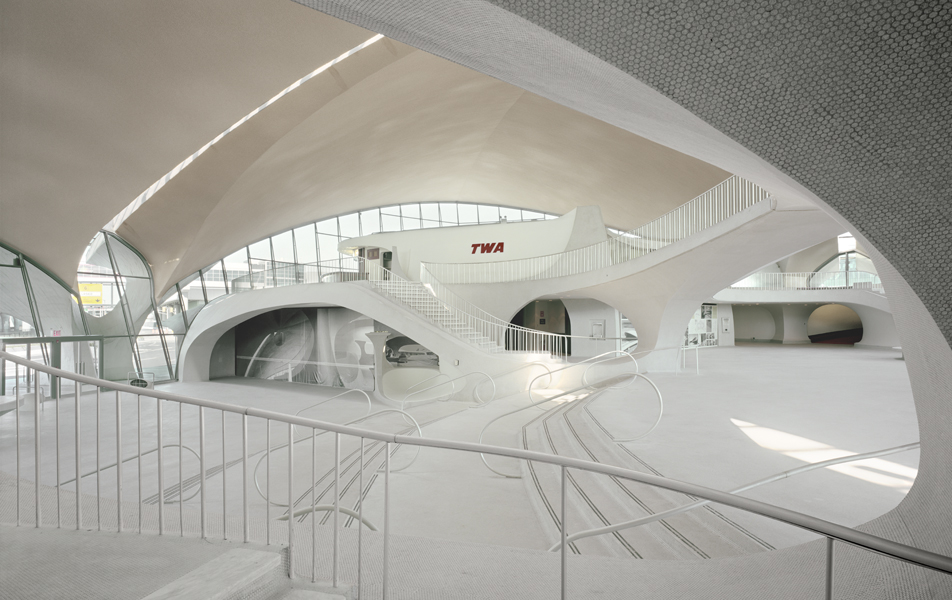“A great building must begin with the immeasurable, must go through measurable means when it is being designed, and in the end must be unmeasured.”
– Louis Kahn
Architectural cultural movements have been the most defining dynamics that have shaped our communities and well, buildings for the longest time. Surrealism has been one such movement that revolutionized spatial design and form.
Why stick to a stereo type?
Why accept the generic norm and conform to them?
Why not perceive something unimaginable? Surrealism was an outcome of these questions that led to a movement in visual art and literature. It principally grew out of the Dada movement, which earlier produced works of anti-art, although surrealism’s intention was not on negation but a sense of positive expression. The 1924 critic and writer André Breton, publisher of The Surrealist Manifesto expressed that, surrealism could be defined as a means of unifying unconscious and conscious realms of experiences so that the world of dreams would join with the rational world that we live in today, calling it as “an absolute reality, a surreality.” Surrealism’s major achievements were also seen in the form of paintings.
Surrealism was an outcome of these questions that led to a movement in visual art and literature. It principally grew out of the Dada movement, which earlier produced works of anti-art, although surrealism’s intention was not on negation but a sense of positive expression. The 1924 critic and writer André Breton, publisher of The Surrealist Manifesto expressed that, surrealism could be defined as a means of unifying unconscious and conscious realms of experiences so that the world of dreams would join with the rational world that we live in today, calling it as “an absolute reality, a surreality.” Surrealism’s major achievements were also seen in the form of paintings.
Surrealism’s impact was seen in every domain of art and well, architecture. An emphasis on content and free from the movement provided an alternative to the highly formal Cubist Movement. The idea of embracing unconscious methods, irrationality in the form of design forms made an artistic appeal to great architects to accentuate this movement in the form of brick and mortar or say concrete structures. From Le Corbusier to Aldo Rossi, many famous architects took inspiration from these movements. The movement is still further carried on to date. With the advent of parametric design, enhanced technology, and thought-provoking materials Surrealism in Architecture is here to stay!
8 Modern Surrealistic Architecture Buildings Around the World
01. The Imprint, Seoul
MVRDV’s design needed to integrate with the buildings that already existed in the complex. The solution for this was a contextual structure that came out of the strategy of projecting the facades of the surrounding architecture and acting as a drape with a building form like a shadow.
The facade was imprinted with a relief pattern and had lifted entrances made of panels of glass-fiber-reinforced concrete (GFRC) cladding which was draped with textile and gold treatment. The outcome thus, that was produced is no less than a theatrical experience, to say the least.
“Two months ago most of the cladding was done and the client said, ‘This is an art piece.’ What is interesting about that is that they are looking for that momentum – that entertainment can become art or that the building can become artistic in that way. What, then, is the difference between architecture and art? The project plays with that and I think that abstraction is part of it, but it has to surprise, seduce and it has to calm down.” says Winy Maas, Principal and Co-founder of MVRDV.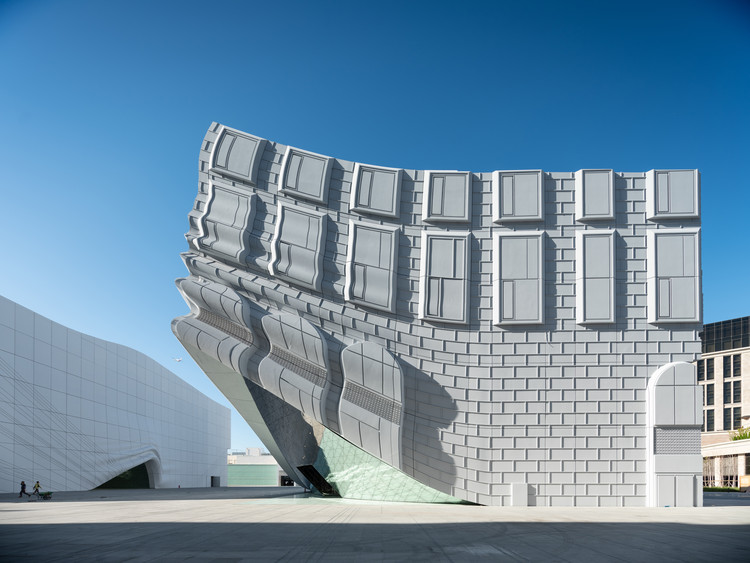


02. TWA Terminal, New York City
Built-in the initial days of airline travel, the TWA Terminal became a concrete symbol of technological advancements and transformation. Architect Eero Saarinen conceptualized the structure to give a sensation of flight in every aspect of the building.
With fluidity in the structure, both inside and outside with a wing-like volume of concrete shell roof, the structure is no less than a monument in the world of aviation. The structure appears as if it is in motion, this irrational and fluid approach is what makes the TWA Terminal a piece of surreal art in itself.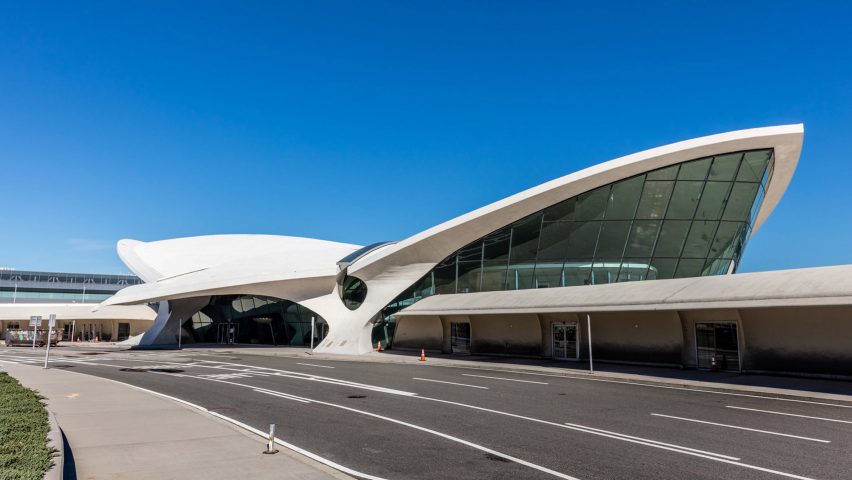
03. Casa Malaparte, Capri
It is considered as one of the best-known examples to explain the legitimacy of Surrealism in architecture. This pure red structure in Punta Massullo comes out and strikes as on the metaphysical paintings rather than a building. The owner of this trapezoidal structure Italian writer, Curzio Malaparte was a patron of surreal artists and designers which allowed the architect Adalberto Libera to recontextualize the bare basic elements that make a house like stairs, doors, windows, and also the color scheme with a striking red that becomes the highlight of the structure. The Casa ends up creating a dramatic and eclectic effect for the user.
The Italian Writer wished the house to reflect his character while Casa became a space for his solitary writing. He once said in his writings, “Now I live on an island, in an austere and melancholy house, which I built myself on a lonely cliff above the sea. [It is] the image of my desire.”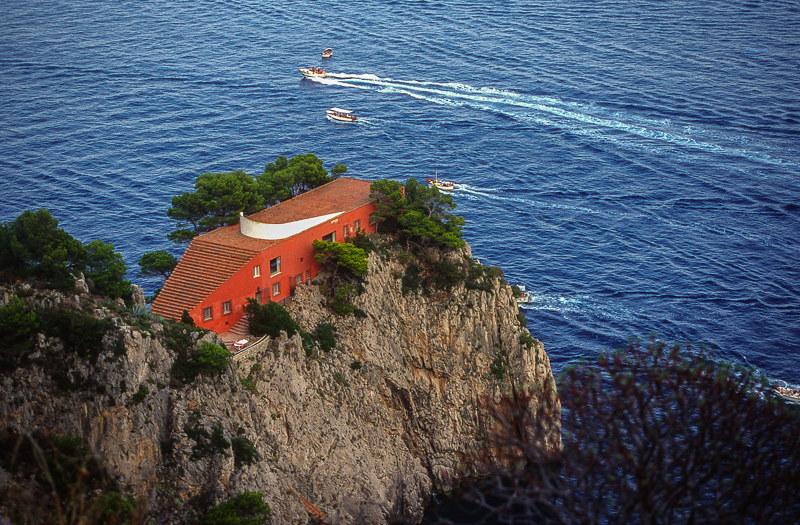

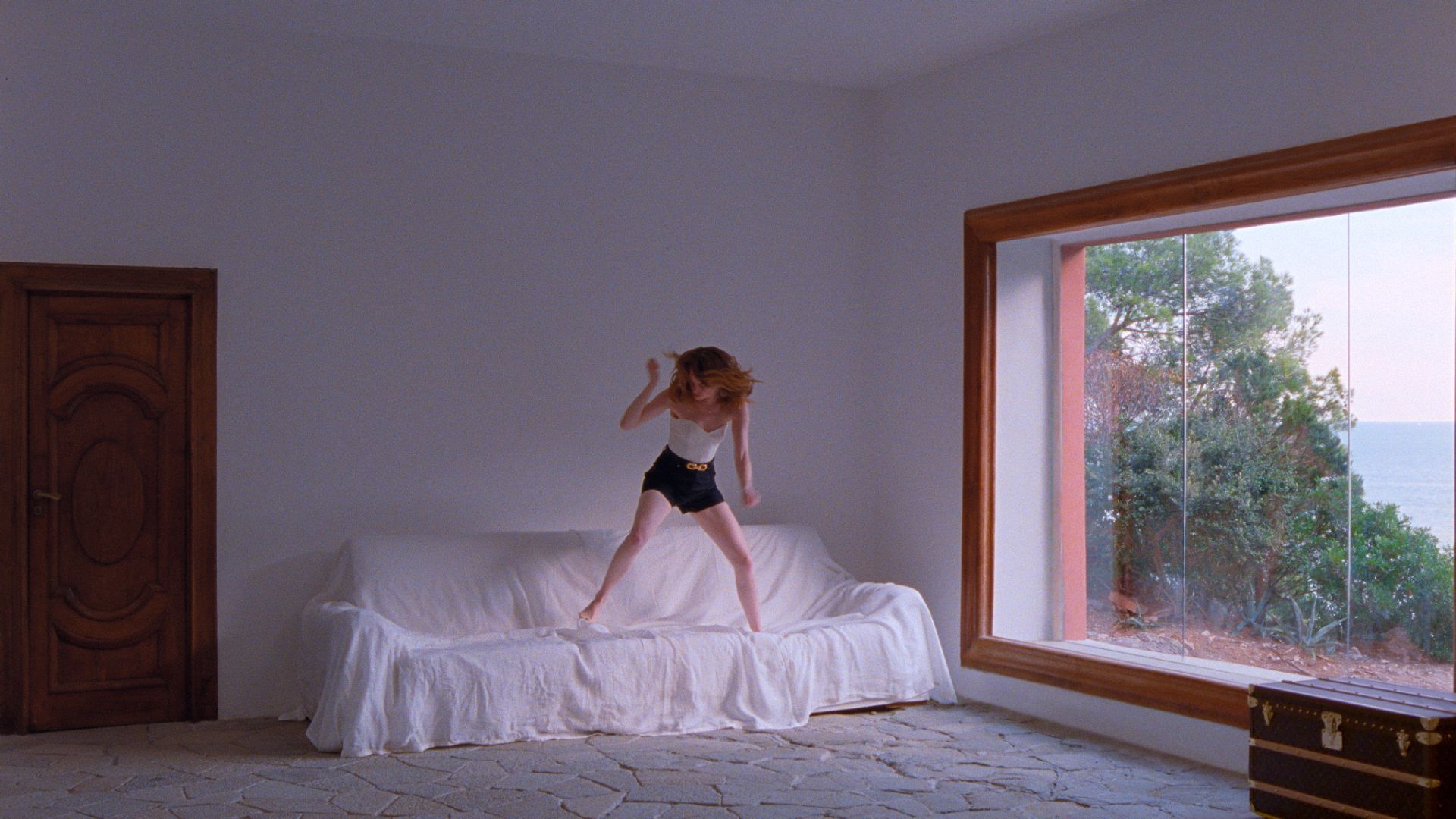
04. Sharp Center for Design, Canada
An elevated “tabletop” extension to the Ontario College of Art and Design contrasting the laidback Victorian modern surroundings with a pop of colors and form ideation with its striking black and white skin in the form of pixels. The form also has 12 multi-colored legs that stand tall up to 26 meters above the ground.
The raise was rather strategically taken to create new outdoor spaces for the local public. The design was ideated to also improvise the pedestrian circulation in the area. The contrasting blend of two ideologies makes a user awestruck by the strange balance that the structure creates in the neighborhood. The building was also recently awarded the “Award of Excellence” from the Toronto Architecture and Urban Design Awards.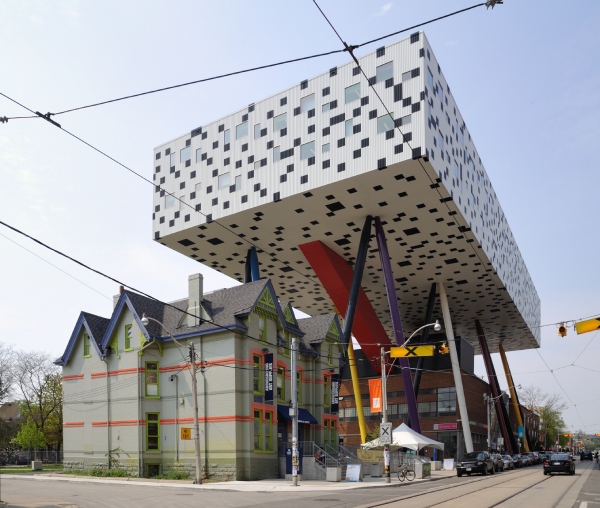
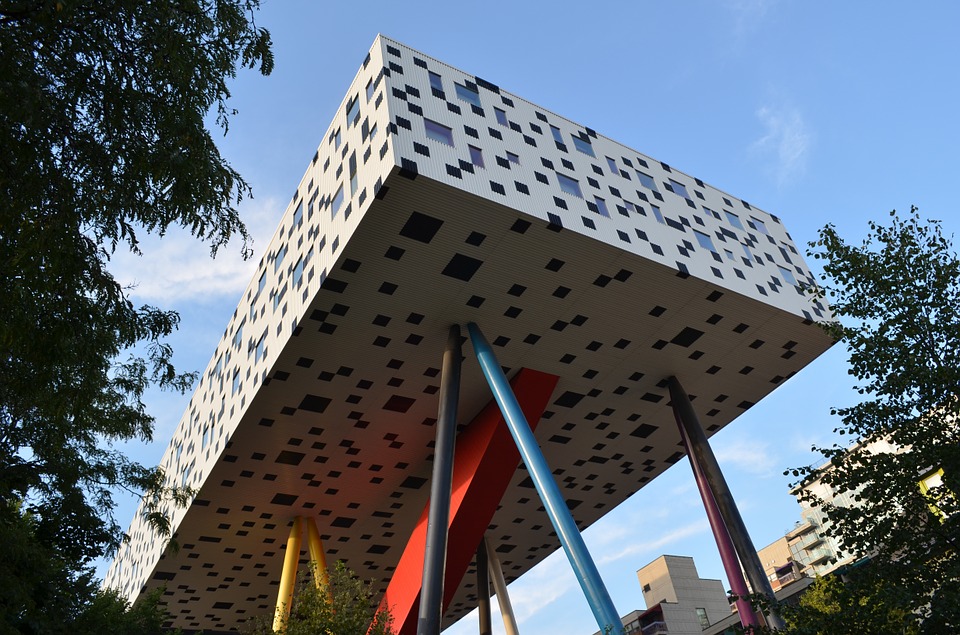
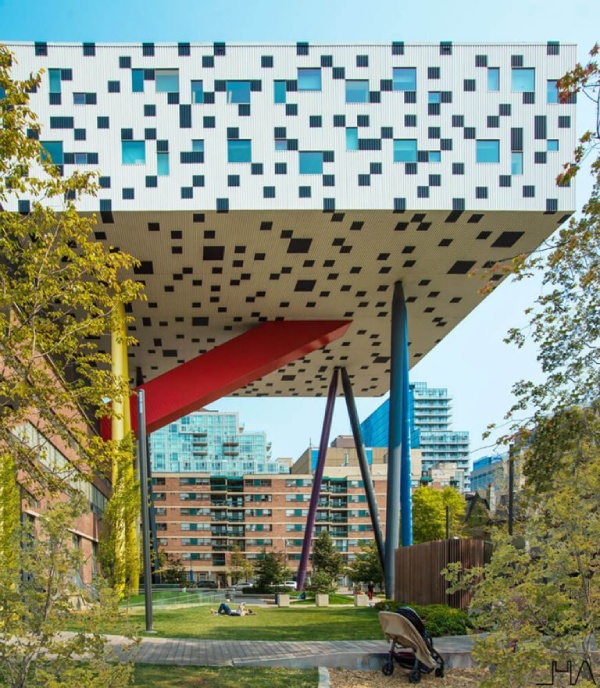
05. See-Through Church, Belgium
The church is made of 100 layers and 2000 columns of steel and is heightened just 10 meters!
Depending on the user’s perception, the church either looks like a huge building or seems to dissolve entirely amidst the scenic landscape backdrop. The base concept of churches being traditional is entirely transformed by turning this structure into a transparent object of seamless art.
The church doesn’t have a fixed set of activities but is focused more on the visual experience making it a marvel to look at.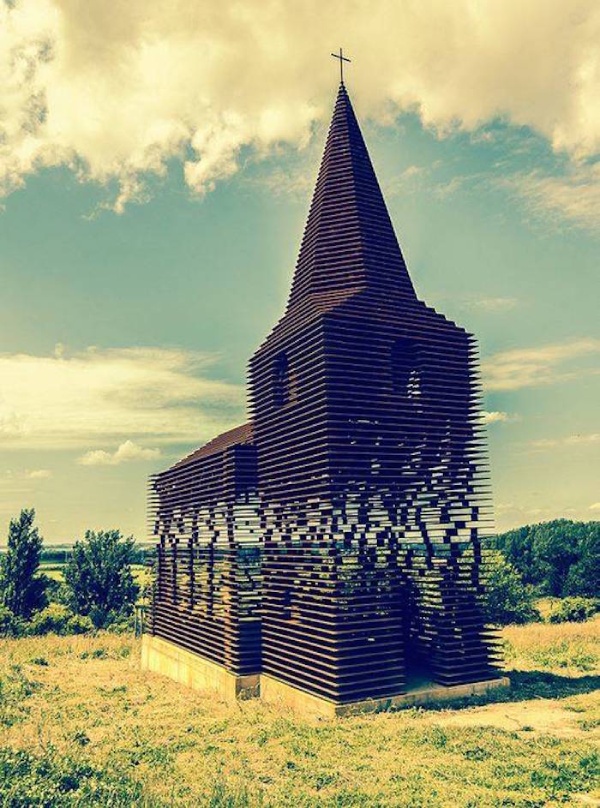

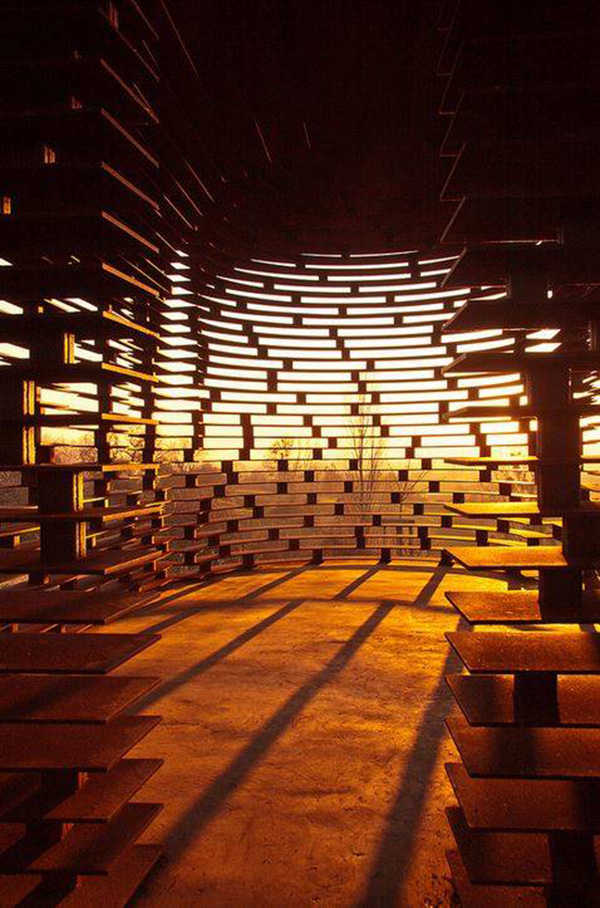
06. City of Arts and Science, Spain
Developed by the architect Santiago Calatrava this large-scale urban recreation center for culture and science is a marvel in itself. Set up midway between the old city of Valencia and the coastal district of Nazaret, it covers an area of 350,000 square meters. Calatrava uses his staple pure white concrete and Gaudi Esque fragments of shattered tiles tying all the structure together as a whole. Two cut concrete shells unify this structure to give a continuous look and finish. The structure enhances surroundings and acts as a state of art in itself.
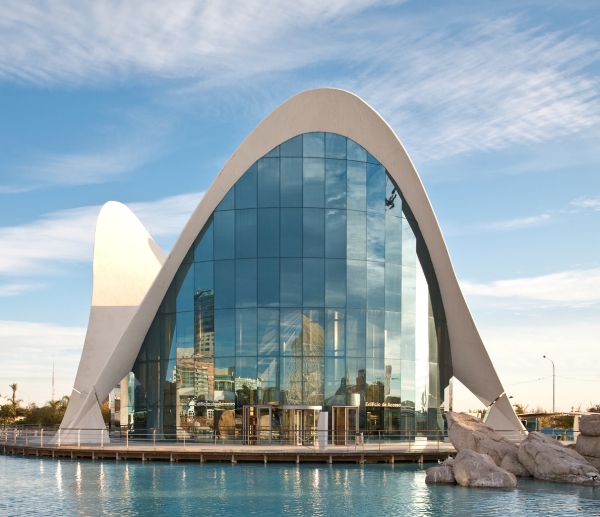
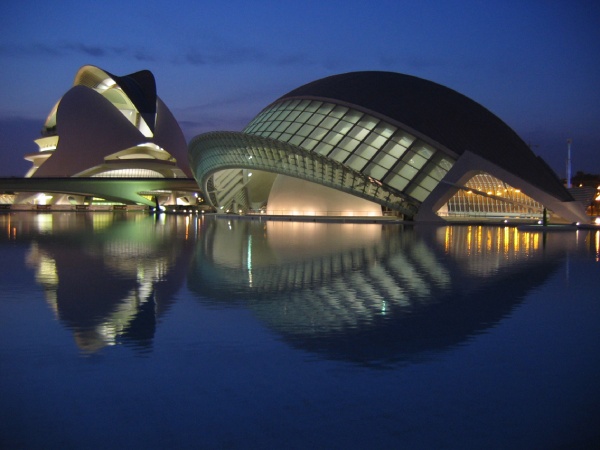
07. Ordos Museum, China
The Art & City museum by MAD Architects reacts to the strict geometry of its master plan and has an amorphous take on its form. The building gives a surreal look as if it has landed on the earth. Space is deeply rooted in the local culture, taking inspiration from the history interpreted in a contemporary form.
Wrapped in polished metal louvers the structure is a solid windowless building that looks as if it is firmly anchored in the ground.
This enormous shell separates the interior from its urban reality creating an illusion that gets further accentuated by the organic form of the structure. The interior exhibition spaces are also designed to be flexible.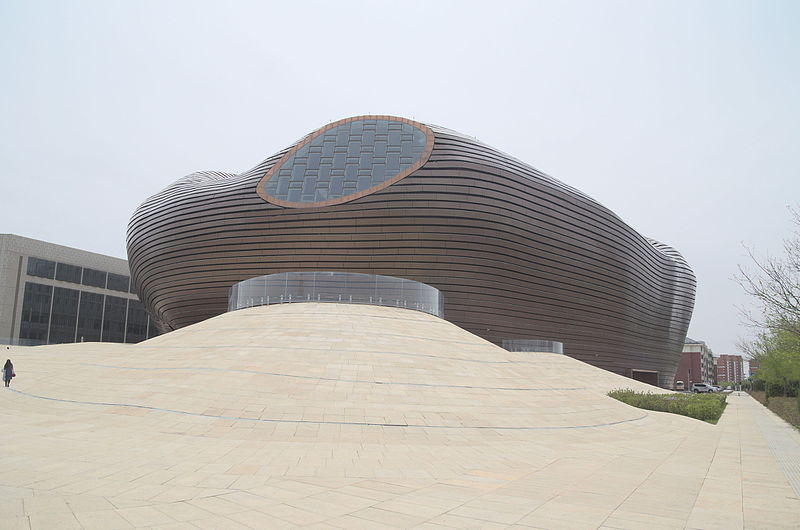
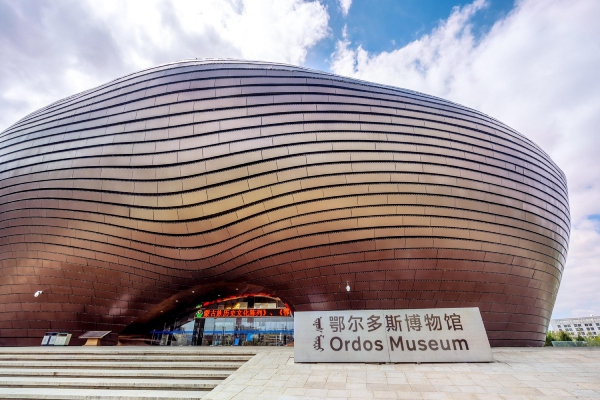
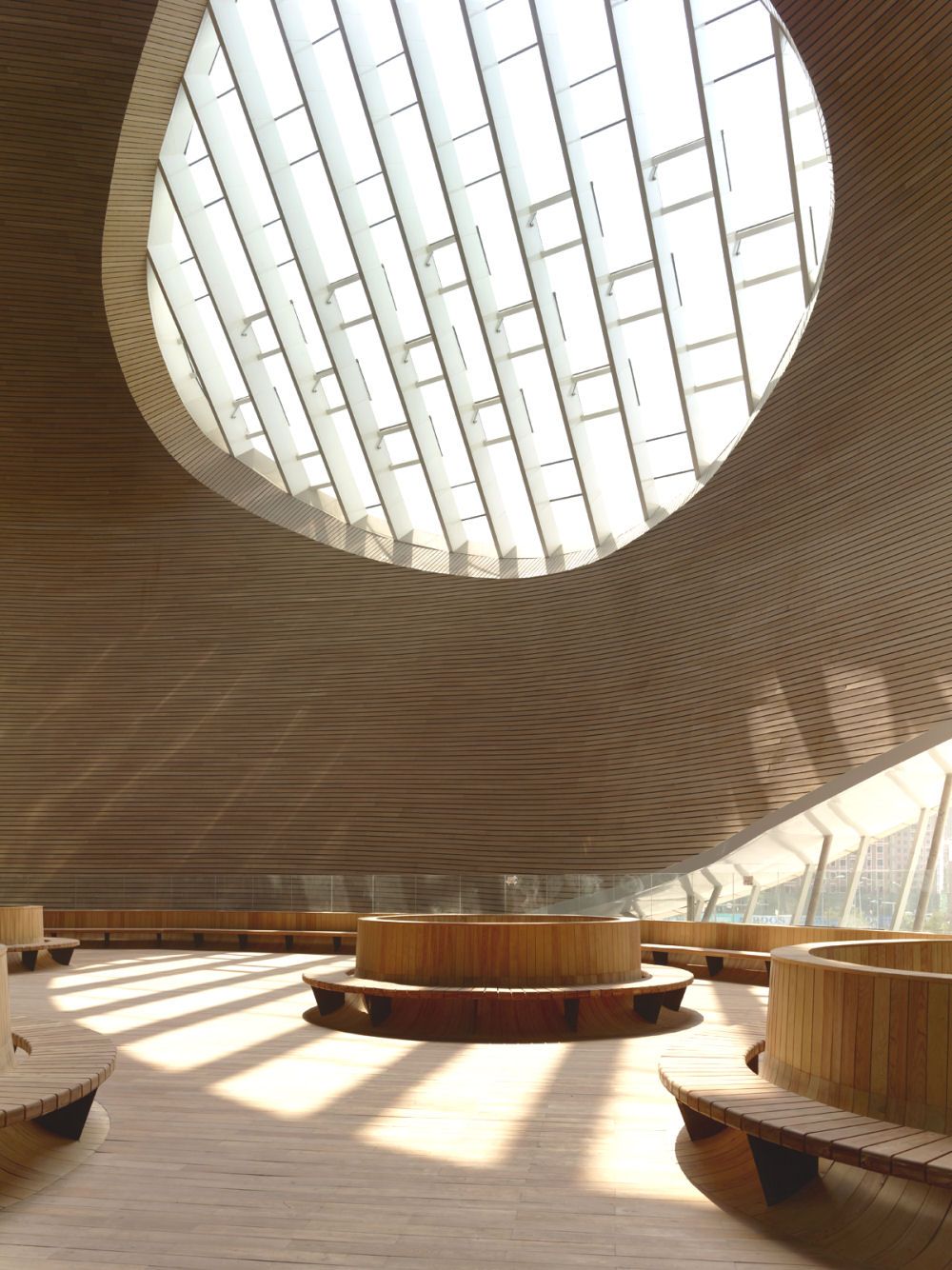
08. Windowless Skyscraper, New York City
33 Thomas Street is also known as the “Long Lines Building” is a monolithic fortress amidst a dense surrounding wrapped in glass and steel. This impenetrable blank-faced structure designed by San Franciscan John Carl Warnecke is built to withstand a nuclear attack on New York. The structure is self-sufficient to provide food, water, and shelter to 1500 people for up to two weeks and is completely removed from the public infrastructure.
The enormity and clean monolithic facade make the structure a strategic sound and a marvel in itself, giving the observer a feeling of surrealism.
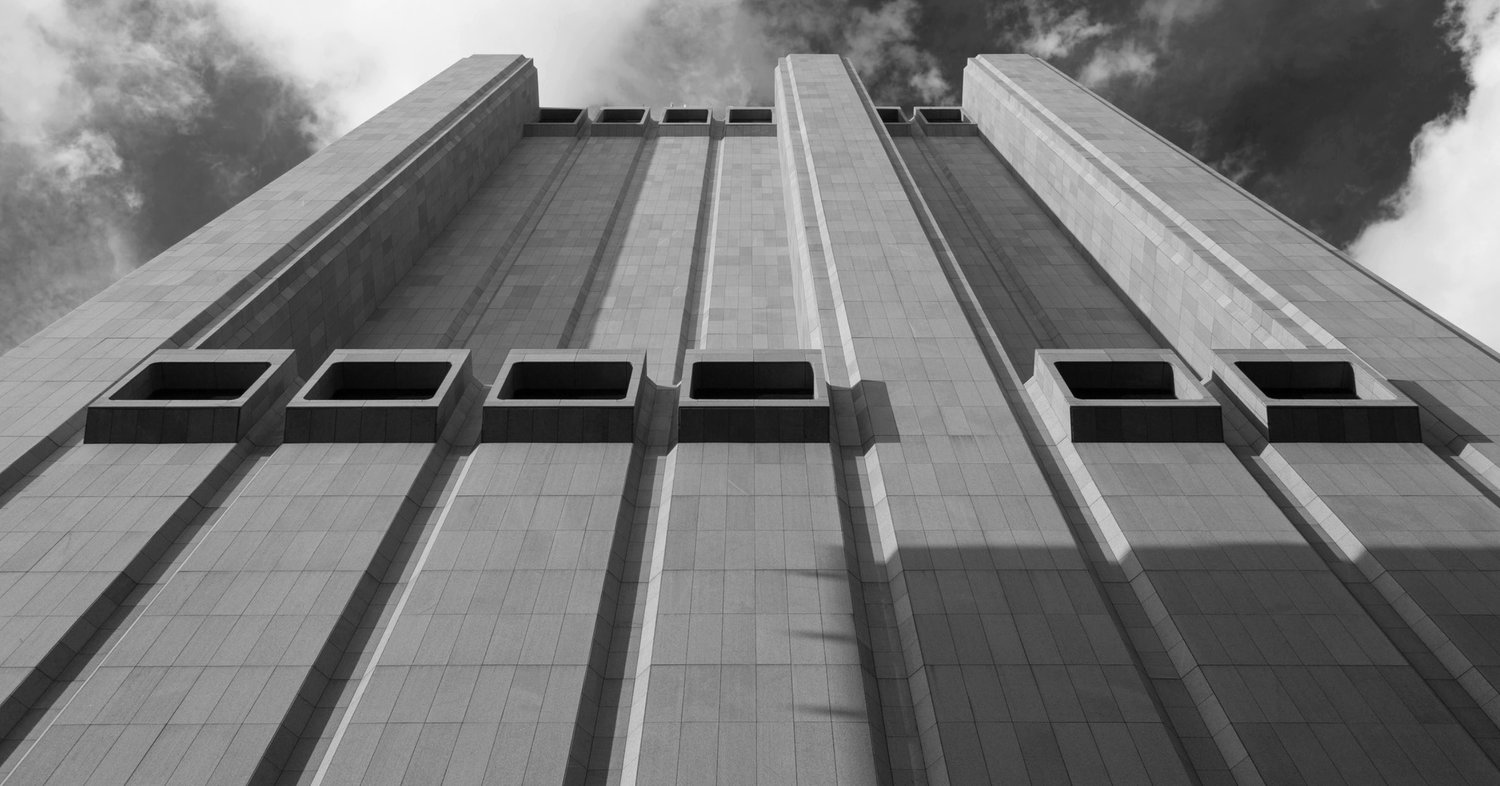
Summing up, Surrealism has accounted to be one of the most vital movements in architectural history due to its range of interpretations and breathtaking structures. In the 21st century where technology and design have made the ideal blend, the scope for Surrealism for a futurist generation is only increasing and growing in value with years.
Apart from this, if you are interested more about modern architecture, do have a glance at articles –
Modern Architecture: Know its Importance & Characteristics!
Famous Buildings that Introduced the “Modern Movement” in India!
Image Courtesy: Image 2, Image 3, Image 4, Image 5, Image 6, Image 7, Image 8, Image 11, Image 13, Image 14, Image 15, Image 16, Image 17, Image 22, Image 23, Image 24, Image 25
Author Bio
Saili Sawantt – She is an Architect and Interior Designer by profession. Writing is what she treats as her passion. She has worked as an Architectural Writer, Editor, and Journalist for various design as well as digital portals, both national and international. Formerly she has also worked with Godrej Properties Limited (GPL) Design Studio, Mumbai, due to her keen interested in learning about Sustainability and Green buildings. Apart from this, she runs her blog ‘The Reader’s Express’ and is a practicing Architect & Interior Designer.




